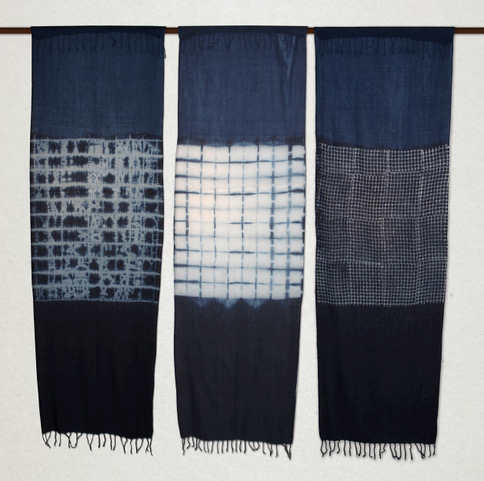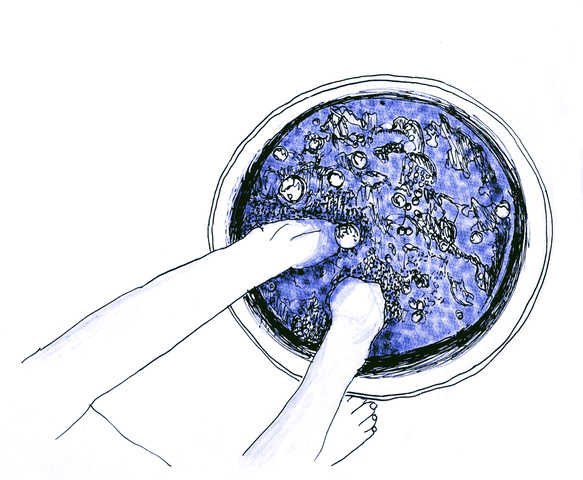Hannah Kindler´s long-term research brought her to Auroville, an experimental township in India that hosts around 2000 people from over 30 countries around the world, who work towards the realization of a united humanity. Here Hannah Kindler (DAI, 2017) co-produced a series of hand-woven and hand-dyed indigo scarves, a material exploration of relationality. On view at Capsicum, together with drawings of the process, till Sunday 23rd July.
Invitation: Presentation of Handmade Indigo Scarves at Caspicum Natuurstoffen Amsterdam
I would like to invite you for the presentation of the hand-woven and hand-dyed indigo scarves I made last year in India.
Presentation: 1st of July, 17 - 19 o´clock
Capsicum Natuurstoffen
Oude Hoogstraat 1
1012 CD Amsterdam
The shop window of Capsicum will also show the scarves and drawings of the process and will be on view from the Saturday 30st June till Sunday 23rd July.
Background information:
The indigo scarves are part of the artist Hannah Kindler´s long-term material research into how labour imprints itself on bodies, the environment, into social interactions, the economy, the globalization process and more.
How do you deal with the things you are making, with yourself, the people and the environment around you? How is this attitude contained in the objects and what kind of relationships do the objects create? With these kinds of questions in mind, Kindler investigates historical, contemporary, economic, aesthetic, geographical and social phenomena surrounding the usage and production of textiles.
The search for a different way to live and work together led Kindler to the experimental township Auroville, India, where she produced the indigo scarves. Auroville hosts around 2000 people from over 30 countries around the world, who work towards the realization of a united humanity. In Auroville Kindler collaborated with Upasana and Colours of Nature, two companies who are part of the community there. Kindler was interested in producing an environmentally friendly product with this `Utopian´ community and starting a conversation about alternative ways of production within the textile industry.
The scarves are made of 100 % organic cotton, which is hand spun and handwoven locally and dyed with natural and traditional indigo dye. The use of cotton and indigo refers to a long textile and trade history between India, Holland and many other countries. The pattern is based on checks, a classic motif found in many cultures around the world. The choice of three very different dyeing techniques, however, namely shibori, clamping and block printing, creates three very different materializations of checks.
In opposition to products of mass production, the scarves emphasize coincidence and imperfection and thus sketch a counterproposal for methods of production.
The textile pieces serve as research as well as a means of representing structures and forms of relations. They are a material exploration of the relations between the conditions of production, the social relations and the objects produced by a society. The wearing of the scarf can be seen as a continuation of the spinning of this Utopian tale.


